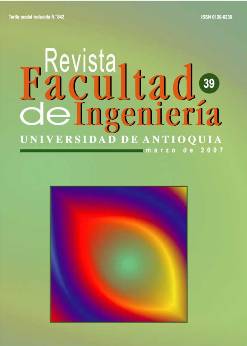An aplication of majorization order on a production-inventory problem
DOI:
https://doi.org/10.17533/udea.redin.20237Keywords:
production, lot size, inventoryAbstract
The order of majorization is a partial order among vectors, taking in account the characteristics of its components. In this paper presents an application of this order to an inventory-production model with constant production and demand rates, which justifies the homogeneity in the lot size of production, what is considered as assumed in the traditional literature.
Downloads
References
S. Goyal; M. Gopalakrishnan. “Production lot sizing model with insufficient production capacity”. Produc-tion planning control. Vol. 7. 1996. pp. 222-224. DOI: https://doi.org/10.1080/09537289608930345
M. A. Hariga. ‘‘Economic production-ordering quantity models with limited production capacity’’. Production Planing Control. Vol 9. 1998. pp. 671-674. DOI: https://doi.org/10.1080/095372898233669
A. Marshall, I. Olkin. Theory of mayorization and its applications. New York. Academic Press. 1979.
Downloads
Published
How to Cite
Issue
Section
License
Revista Facultad de Ingeniería, Universidad de Antioquia is licensed under the Creative Commons Attribution BY-NC-SA 4.0 license. https://creativecommons.org/licenses/by-nc-sa/4.0/deed.en
You are free to:
Share — copy and redistribute the material in any medium or format
Adapt — remix, transform, and build upon the material
Under the following terms:
Attribution — You must give appropriate credit, provide a link to the license, and indicate if changes were made. You may do so in any reasonable manner, but not in any way that suggests the licensor endorses you or your use.
NonCommercial — You may not use the material for commercial purposes.
ShareAlike — If you remix, transform, or build upon the material, you must distribute your contributions under the same license as the original.
The material published in the journal can be distributed, copied and exhibited by third parties if the respective credits are given to the journal. No commercial benefit can be obtained and derivative works must be under the same license terms as the original work.










 Twitter
Twitter